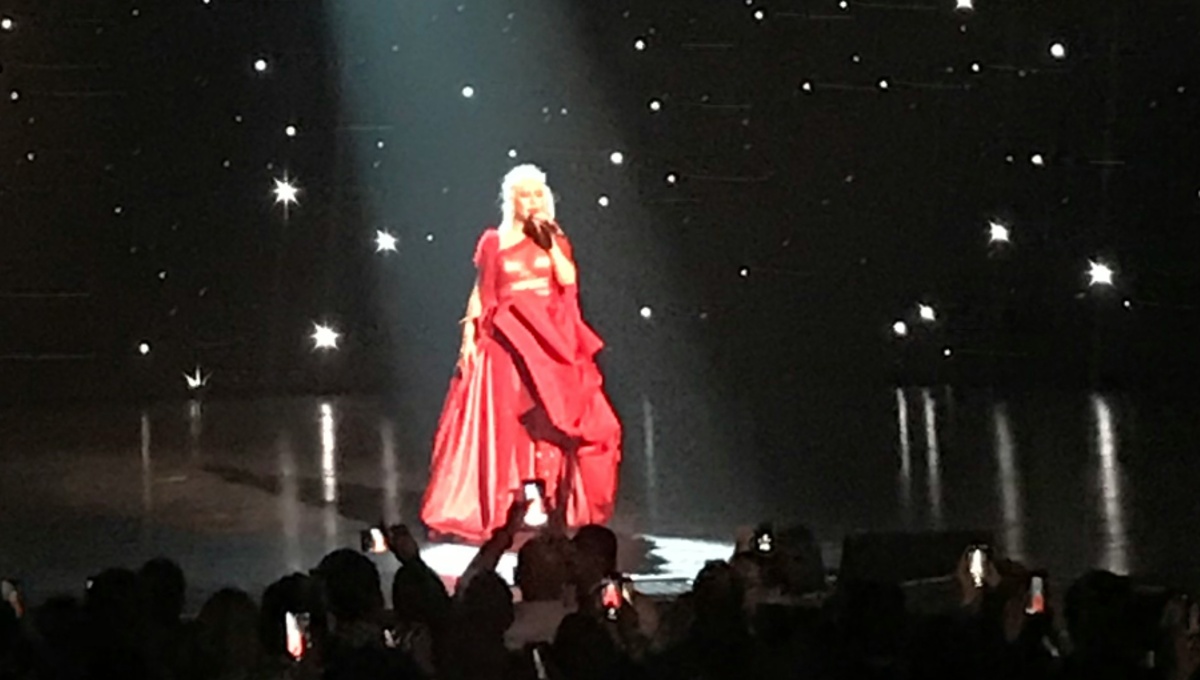In an effort to stimulate the economy the Reserve Bank of Australia (RBA) cut the cash rate three times in 2019, to a record low 0.75% from 1.50%.
- What are RBA's responsibilities?
- What is quantitative easing?
- Other unconventional monetary policies
- Why are we talking about quantitative easing?
- Quantitative easing in Australia
- Quantitative easing worldwide
- Would quantitative easing work?
Buying a home or looking to refinance? The table below features home loans with some of the lowest variable interest rates on the market for owner occupiers.
| Lender | Home Loan | Interest Rate | Comparison Rate* | Monthly Repayment | Repayment type | Rate Type | Offset | Redraw | Ongoing Fees | Upfront Fees | LVR | Lump Sum Repayment | Additional Repayments | Split Loan Option | Tags | Features | Link | Compare |
|---|---|---|---|---|---|---|---|---|---|---|---|---|---|---|---|---|---|---|
6.04% p.a. | 6.06% p.a. | $2,408 | Principal & Interest | Variable | $0 | $530 | 70% | Featured Online ExclusiveUp To $4K Cashback |
| |||||||||
5.99% p.a. | 5.90% p.a. | $2,396 | Principal & Interest | Variable | $0 | $0 | 80% | Featured Apply In Minutes |
|
By the RBA’s own standards, these measures are not yet having the desired effect upon the economy, and as a result, the central bank is now considering quantitative easing (QE).
In perhaps one of the most anticipated RBA speeches in recent years, RBA Governor Phillip Lowe addressed the Australian Business Economists Dinner on Tuesday, outlining how QE would be applied to Australia’s economy.
QE is a far more complex and drastic measure than rate cuts and it’s worth being educated on as it could have a pretty big impact on your life.
What are the RBA’s responsibilities?
Before getting into what quantitative easing is, it’s important to recognise the role and responsibilities of the RBA, to understand why they make decisions.
The central bank’s main duties are managing the economy and inflation, working towards full employment and issuing banknotes. It works in conjunction with but separately to the government – the RBA controls monetary policy (i.e. interest rates) while the government controls fiscal policy (taxes and spending).
Monetary policy refers to keeping inflation at its desired level, using the cash rate as a tool to do so, in order to keep the economy ticking over.
Herein lies the RBA’s problem.
Low-interest rates aren’t working
Repeatedly stated by Mr Lowe, cash rate cuts have been aimed at achieving two targets: reducing unemployment to 4.5% and pushing inflation to 2-3%.
Australian Bureau of Statistics (ABS) data for the September 2019 quarter found the rate of inflation to be 0.5% for the quarter, taking the annual rate of inflation to 1.7%. However, trimmed mean inflation (the RBA’s preferred measure) was just 0.4% in the September quarter, taking it to to 1.6% for the year.
Meanwhile, Australia’s unemployment rate rose to 5.3% in October, up from 5.2% in September, while the underemployment rate rose to 13.8%. In theory, with the record low cash rate, unemployment should be at an all-time low and wage growth and inflation should be through the roof.
But even with 2019’s three cash rate cuts, the RBA is no closer to achieving its goals.
The plan behind the cash rate cuts is:
- Businesses have more money to spend so they hire more staff
- This lowers the unemployment rate which in turn swells wage growth
- Inflation increases as more people have more money to pump into the economy
Yet this hasn’t been the case. Consumer confidence has fallen and Australians appear to be in savings mode, funnelling more money into paying off their debt rather than spending like drunken sailors.
So the RBA has recently put more thought towards unconventional monetary policy, such as quantitative easing.
What is quantitative easing?
Quantitative easing is the process by which a central bank uses its cash reserves (or even prints money) to buy government bonds and/or private bonds.
Don’t worry, we’ll break that statement down into layman’s terms.
First of all, a government bond is a relatively low-risk investment product which essentially involves investors lending money to the government for a set period of time, at a pre-determined rate of return – referred to as the yield or a bond’s interest rate. They’re considered low risk because it’s considered highly unlikely the government will fail to repay this debt (maybe don’t buy bonds from Greece).
So if the RBA were to buy a huge amount of government bonds, giving the government a lot more to spend with, the flow-on effects should see the economy flushed with billions of dollars of extra money. This large purchase would also be expected to raise the price of bonds and lower bond yields. Lower bond yields, in turn, lower funding costs for lenders, allowing these institutions to cut the interest rates on lending products such as home loans and business loans.
Coupled with low-interest rates, banks are better off lending money than holding onto it. So basically, the RBA spends huge quantities of cash it has created, to ease monetary policy.
With regards to private bonds, the process works essentially the same, but the RBA would purchase bank bonds, corporate bonds or commercial paper.
It’s a more targeted effort and generally doesn’t have the widespread effect that government bond purchase does, due to the money being spent in the private sector.
What other unconventional monetary policies are there?
Besides QE, there are several other unconventional monetary policies the RBA could use to achieve its targets.
The first of these is to continue to cut the cash rate to zero or even to negative rates, which has already happened in countries like Denmark, Sweden and Japan. In this scenario, consumers could have to pay a fee to have their money in a bank account, rather than the amount attracting interest.
Another policy is ‘explicit forward guidance’, which is the central bank publically saying that interest rates will be very low for a set period of time until a certain date, or until targets are reached.
It’s highly unlikely we will see the first of these policies, but we’re arguably already experiencing the second, with Mr Lowe often citing a period of low rates for Australia to reach the RBA’s targets.
In his speech made on Tuesday, Mr Lowe said that negative interest rates in Australia are extraordinarily unlikely.
“It has become increasingly apparent that negative rates create strains in parts of the banking system that can impair the ability of some banks to provide credit,” Mr Lowe said.
“In addition, there is evidence that they can encourage households to save more and spend less, especially when people are concerned about the possibility of lower income in retirement.
“A move to negative interest rates can also damage confidence in the general economic outlook and make people more cautious.”
The final policy the RBA could enact is the ‘helicopter drop’, which would probably be the most popular with everyday punters. This involves the central bank essentially handing out money to Australians, via cheque, who then go out and spend it on the economy, quickly driving up inflation.
Why are we talking about quantitative easing?
With the Reserve Bank unwilling to cut the cash rate into the negatives and it already sitting at 0.75%, there is little wiggle room. Although it’s widely predicted that the central bank will cut again in February to 0.5%, the effect of these cuts is dwindling.
Savings accounts have taken a big hit, with many interest rates under the annual rate of inflation, meaning the real value of funds in those accounts are shrinking. Inflation meanwhile hasn’t been in the RBA’s target band for over three years, and unemployment is on the rise.
Globally, the China and US trade war is negatively affecting the world’s economy and fears of a recession are mounting.
Quite simply, the RBA is running out of options.
The real fuel on the fire was the announcement of Mr Lowe’s speech titled ‘Unconventional Monetary Policy: Some Lessons From Overseas’ which provided a valuable insight into QE in Australia.
When and how would we see quantitative easing in Australia?
In his speech, Mr Lowe essentially ruled out negative interest rates and implied Australia was experiencing explicit forward guidance.
He outlined three other important observations regarding QE in Australia.
The first of these was that the RBA had no appetite to undertake the purchase of private bonds as a part of a QE program.
“There are two reasons for this. The first is that there is no sign of dysfunction in our capital markets that would warrant the Reserve Bank stepping in,” Mr Lowe said.
“The second is that the purchase of private assets by the central bank, financed through money creation, represents a significant intervention by a public sector entity into private markets.
“It comes with a whole range of complicated governance issues and would insert the Reserve Bank very directly into decisions about resource allocation in the economy.”
Mr Lowe’s second point emphasised that if the RBA were to utilise QE, they would do so by buying government bonds.
“An important advantage in buying government bonds over other assets is that the risk-free interest rate affects all asset prices and interest rates in the economy.
“So it gets into all the corners of the financial system, unlike interventions in just one specific private asset market.”
He added that this would not occur until the cash rate was cut to 0.25%.
“At a cash rate of 0.25 per cent, the interest rate paid on surplus balances at the Reserve Bank would already be at zero given the corridor system we operate.
“So from that perspective, we would, at that point, be dealing with zero interest rates.”
Despite all the talk of QE, Mr Lowe said the threshold for QE, the aforementioned 0.25% cash rate, was not expected to be reached in the near future.
“It is difficult to be precise, but QE would be considered if there were an accumulation of evidence that, over the medium term, we were unlikely to achieve our objectives.
“In particular, if we were moving away from, rather than towards, our goals for both full employment and inflation, the purchase of government securities would be on the agenda of the Board.
“In this world, I would hope other public policy options were also on the country’s agenda.”
Westpac Chief Economist Bill Evans has predicted that the cash rate will be cut be in February and June 2020, down to 0.25%, with QE to follow.
“We see this June RBA rate cut as complementing fiscal policy – with the May Federal Budget likely to include some new policy measures (Westpac strongly supports a partial bring forward of the already legislated personal income tax cuts, which are not due to be implemented until July 2022),” Mr Evans wrote.
“We doubt that any package of budget measures will be sufficiently expansionary to preclude the need for additional monetary policy easing.”
Mr Evans added that he believes the unemployment rate is likely to reach 5.6% by March 2020 and hold that level throughout the year.
Where else has quantitative easing been used?
Since the turn of the millennium, quantitative easing has been used several times globally. Japan used the policy from 2001 to 2006 and again in 2012, while the US central bank, The Federal Reserve, undertook the most successful QE effort from 2008 to 2014, increasing its balance sheet to $4.5 trillion from $900 billion.
Federal officials said their efforts saved the country from a crisis worse than the Great Depression.
Most recently the European Central Bank adopted QE from 2015 to 2018. It bought 60 to 80 billion worth of euro-denominated bonds every month in that time.
Would it work?
Experts are split on whether quantitative easing would work in Australia. Some have pointed to success seen overseas and current strategies being ineffective to date.
Those against have warned inflation could rapidly increase to a dangerous level and said it’s an unnecessary measure currently. Most economists agree that quantitative easing is not an option that should be undertaken lightly, which Mr Lowe agrees with.
In his speech, he pointed to previous international efforts and RBA research that found central bank intervention in stagnant economies had indeed been successful.
However, evidence of the positive effects of unconventional monetary policy, like QE, was not compelling as these measures were still in place.
“These various measures certainly pushed down long-term yields and provided monetary stimulus in the depths of the crisis when it was needed,” Mr Lowe said.
“But these extraordinary measures have continued way past the crisis period. In some countries, asset purchases have yet to be unwound and it remains unclear when, and even if, this will happen. So a full evaluation is not yet possible.”
Mr Lowe also noted that there were several negative side effects to QE, like over-reliance of monetary policy and stifling bank lending.
“It is also possible that the willingness of a central bank to use its full range of policy instruments might create an inaction bias by other policymakers, either the prudential regulators or the fiscal authorities.
“Persistently low or negative interest rates and a flattening of the yield curve can damage bank profitability, leading to less capacity to lend.”
Mr Lowe has repeatedly clashed with the government over their fiscal spending and he said a third negative side effect of QE is a possible blurring of the lines between monetary and fiscal policy.
“If the central bank is buying large amounts of government debt at zero interest rates, this could be seen as money-financed government spending.
“In some circumstances, this could damage the credibility of a country’s institutional arrangements and create political tensions.
“Political tensions can also arise if the central bank’s asset purchases are seen to disproportionality benefit banks and wealthy people, at the expense of the person in the street.”
Whether QE would work is clearly something that even Australia’s most accomplished economists are not sure of. But should it be enacted, it will not be done so lightly.
“In my view, there is not a smooth continuum running from interest rate reductions to quantitative easing,” Mr Lowe said.
“It is a bigger step to engage in money-financed asset purchases by the central bank than it is to cut interest rates.”
Savings.com.au’s two cents
Unless you’re on the RBA board, which you’re assumedly not, you have little control over monetary policy. You do, however, have control over your own finances and financial literacy.
Quantitative easing is a complex topic, but if you have a basic understanding of how it works and how it could affect your situation, you’re putting yourself in the best position to benefit from it.
Stay up to date with the RBA’s rumblings via our website and keep in contact with your financial institution to see how they’re responding to the central bank’s moves.

Ready, Set, Buy!
Learn everything you need to know about buying property – from choosing the right property and home loan, to the purchasing process, tips to save money and more!
With bonus Q&A sheet and Crossword!





 Denise Raward
Denise Raward
 Brooke Cooper
Brooke Cooper

 Rachel Horan
Rachel Horan


